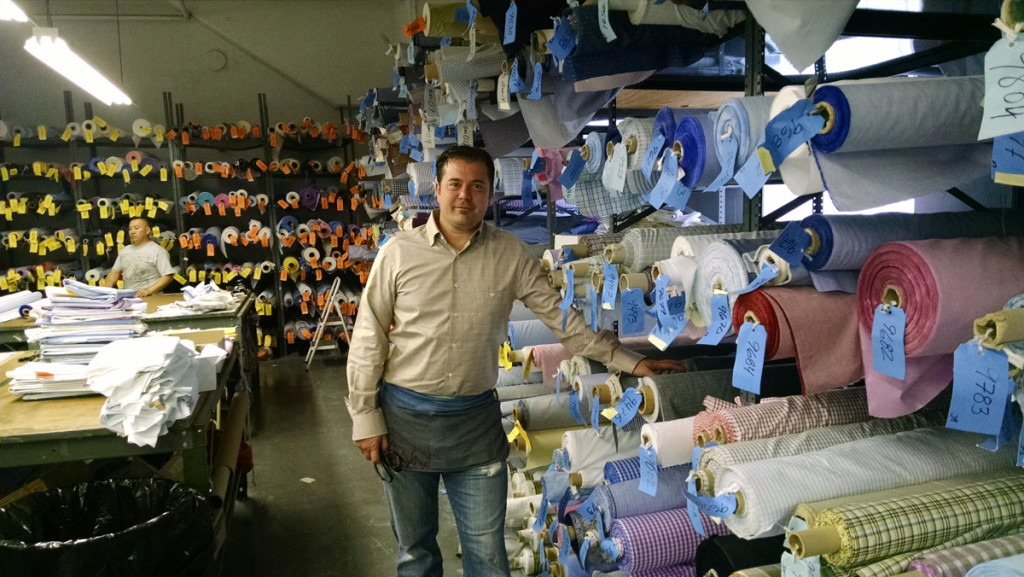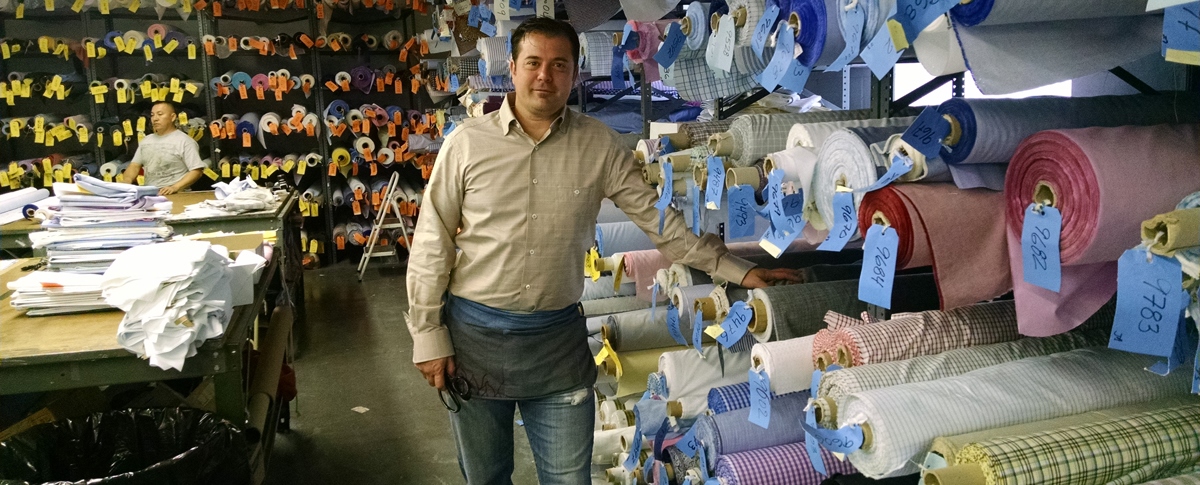Mitch Gambert Talks About the Future of the CTDA

The Custom Tailors and Designers Association (CTDA) is a non-profit network of custom tailors, manufacturers and retailers of custom clothing. Their goal is to educate members, particularly the sellers of custom apparel. The CTDA offers classes during January and July market weeks in New York to members and non-members, and a Master Custom Designer or Clothier certificate for the full 7-course program. The group also organizes, Designer Forum NY, a hotel-based trade show during market weeks.
CTDA board VP Mitch Gambert of Mel Gambert Custom Shirts is next in line to be president; he and current president Peter Roberti of Adrian Jules have been working with the rest of the board on a series of ambitious projects to increase membership and make the organization relevant to the consumer public. I spoke with Gambert about the plans recently—the following is an edited version of our conversation.

Before we get into the CTDA, what sort of trends are you seeing in the custom dress shirt business?
The two things we’re doing the most of right now are hidden button-down collars and link cuffs. At least 30% of custom orders are hidden button-down collars these days, which is huge. They keep the collar in a good, constructed stance. And link cuffs are barrel cuffs with two button holes and no buttons—the way coats are being cut so much trimmer in the sleeve opening, men find French cuffs too bulky.
What is the CTDA’s history? How has the group changed?
It was originally called the Cutters Association, and back in the 1880s, the group was all true bench-made tailors. At the meetings, master tailors would debate how to reweave a garment, or the best way to cut for a front seam alteration on pants. As I understand it, they started inviting vendors—button guys, thread guys—to set up in rooms and hawk their wares to tailors the 1960s or ‘70s, and that’s how it evolved to what it is today.
So it evolved from just tailors to include custom manufacturers and suppliers?
More of the custom tailors are manufacturers like us or Adrian Jules and Martin Greenfield rather than the old bench-made guys. And then the different textiles merchants. It’s now more of a merchant/vendor organization.
The running of the organization has become more slanted toward trade shows but the mandate for education has never gone away. The CTDA took over the Haberdashery Show at the Warwick Hotel and morphed it into the Designer Forum New York show. Vendors show in hotel rooms, but we also have four or five classes in things like business, fabric knowledge and blue penciling (understanding how to mark suits for alteration).
And you’ve added a new education event to your calendar in the spring.
In May this year we got back to the convention style of meeting. About 50 members came down to Atlanta for some talks and classes — there was no selling. We had two speakers from Dale Carnegie and a social media expert to educate people about how to use Twitter and Facebook. Peter Roberti of Adrian Jules and I were in a roundtable discussion about how to talk to your vendors about submitting orders for custom suits and shirts. There was a class about networking and getting referrals from your customers. We’d like to do educational events like this every spring. I’d like to give Peter a big nod on that — this really was his vision and he worked his tail off.
Can you talk about your plan to make the CTDA more relevant to consumers?
Think about banking. Consumers will bank at an FDIC-insured bank because they know what they’re getting, and if something goes wrong there, someone will step in and fix it for them. I would like to figure out a way to make the CTDA relevant to consumers in a similar way. It’s a guarantee that our members will back up what they sold: if they say it’s made in America, it is. If they make a mistake, they will fix it. It would be like the vetting process America’s Best Cleaners uses for dry cleaners. They use secret shoppers. They know that if there’s an issue with a garment, the cleaner will fix it or replace it. It’s a lofty goal, but we’ve been starting to steer toward it since last year.
How do you make it happen? Do you need to raise money? Hire more staff?
We have a new executive director, D-D Flannery, who’s the brains behind the operation. And the board members meet by phone every Tuesday at 9am for an hour. We’re working on a fundraiser now, selling 500 tickets for $100 each to win a trip to Italy to see some mills.
Who makes up the leadership of the group?
In addition to the current president and myself, Craig Wertheim of Scabal is next in line to be president. Jeff Landis of Montopoli Custom Clothiers in Chicago is the treasurer, Gordon Goldstein of GRM International is the secretary and Mark Metzger of Highcliffe Clothiers in Middleburg, Va. is the most recent past president. Kristine Trager of Isles Textiles Group, another former president, sits in on our board meetings. John Meegan chairs the membership committee. And most importantly, our executive director, D-D Flannery.
Are you actively courting new members now? Who is eligible?
Anybody in tailoring is eligible, anyone who sells a custom tailored garment — shirts, suits, slacks — anyone who’s doing clothing with alterations. And any custom tailored manufacturer in the textile industry is eligible, anywhere in the world.
Who are we trying to attract? The sales people who are selling those products. Through the education and the camaraderie the organization offers, they will only become better sellers.
What is the membership process like?
There are annual dues and there is some vetting. There’s a big issue of trust with custom clothing. It’s a personal relationship from customer to seller and then from seller to manufacturer. We want to know that member companies are going to support our mantra: understanding the consumer comes first. That’s easier said than done. It’s about being able to lean on other people who’ve done what you’re doing before. It’s also about helping younger people in the business grow.
For more information about the CTDA and its membership and education programs, visit CTDA.com.








